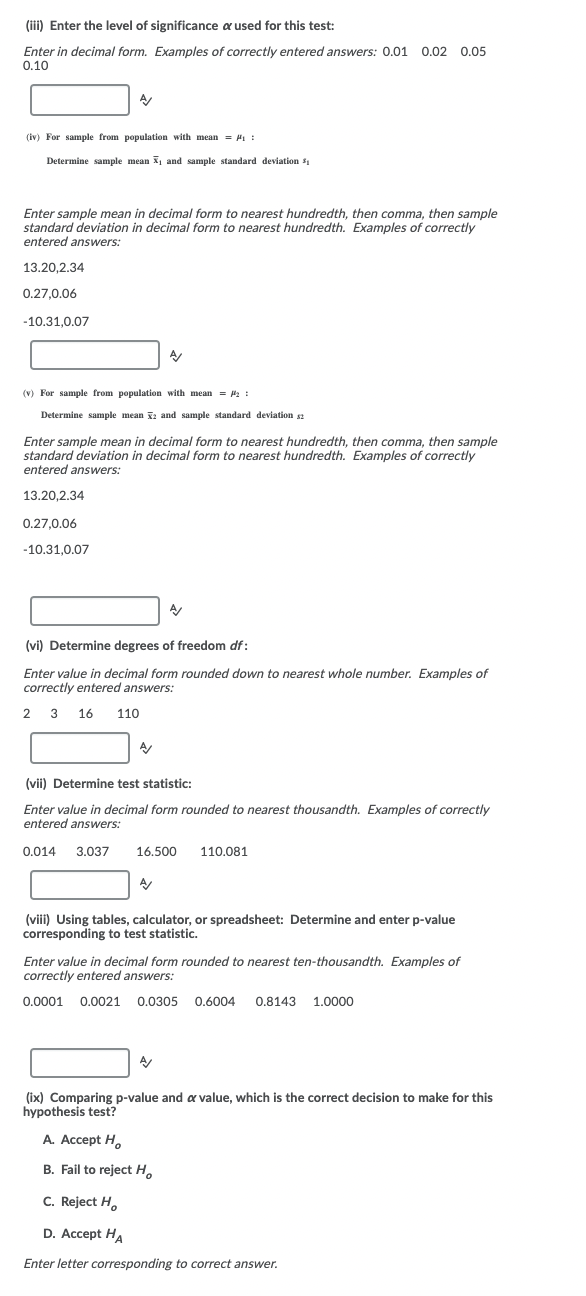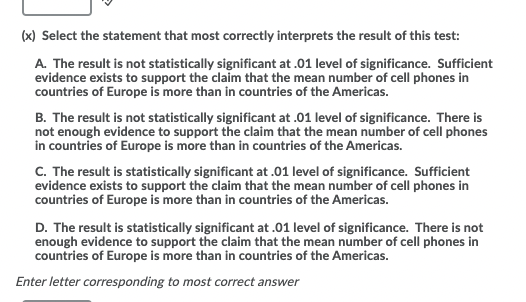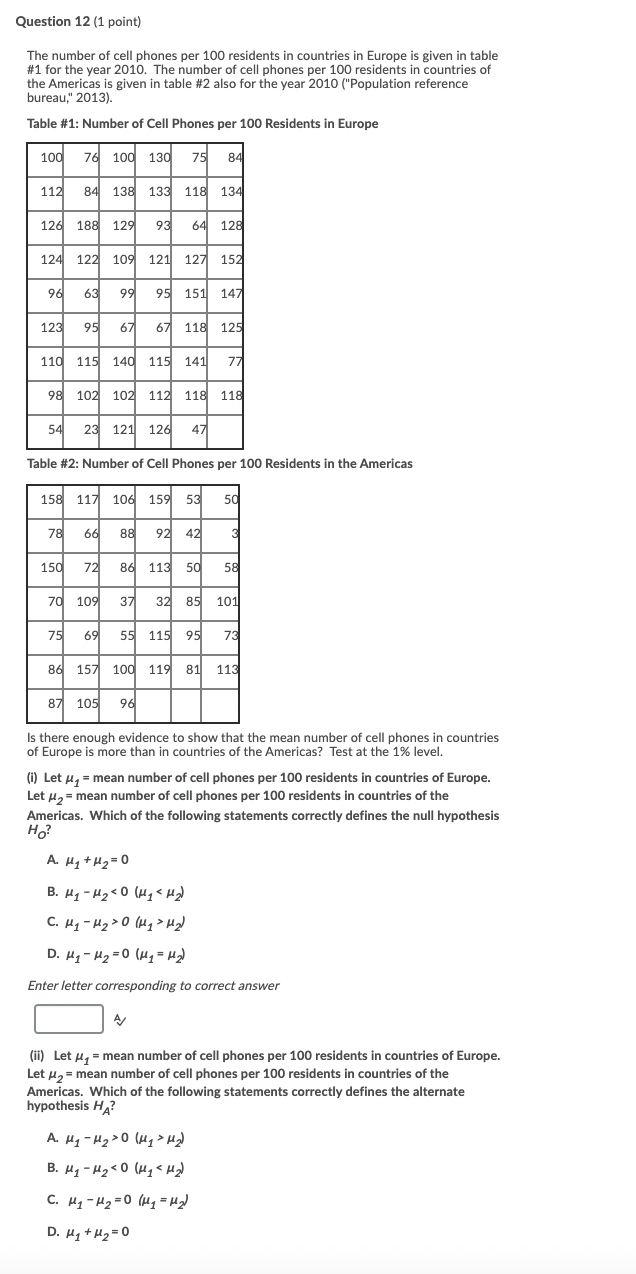please help
(ili) Enter the level of significance or used for this test: Enter in decimal form. Examples of correctly entered answers: 0.01 0.02 0.05 0.10 (iv) For sample from population with mean = #1 : Determine sample mean x, and sample standard deviation s; Enter sample mean in decimal form to nearest hundredth, then comma, then sample standard deviation in decimal form to nearest hundredth. Examples of correctly entered answers: 13.20,2.34 0.27,0.06 -10.31,0.07 (v) For sample from population with mean = / : Determine sample mean ya and sample standard deviation s Enter sample mean in decimal form to nearest hundredth, then comma, then sample standard deviation in decimal form to nearest hundredth. Examples of correctly entered answers: 13.20,2.34 0.27,0.06 -10.31,0.07 (vi) Determine degrees of freedom df: Enter value in decimal form rounded down to nearest whole number. Examples of correctly entered answers: 2 3 16 110 (vii) Determine test statistic: Enter value in decimal form rounded to nearest thousandth. Examples of correctly entered answers: 0.014 3.037 16.500 110.081 (vill) Using tables, calculator, or spreadsheet: Determine and enter p-value corresponding to test statistic. Enter value in decimal form rounded to nearest ten-thousandth. Examples of correctly entered answers: 0.0001 0.0021 0.0305 0.6004 0.8143 1.0000 (ix) Comparing p-value and a value, which is the correct decision to make for this hypothesis test? A. Accept Ho B. Fail to reject Ho C. Reject Ho D. Accept HA Enter letter corresponding to correct answer.(x) Select the statement that most correctly interprets the result of this test: A. The result is not statistically significant at .01 level of significance. Sufficient evidence exists to support the claim that the mean number of cell phones in countries of Europe is more than in countries of the Americas. B. The result is not statistically significant at .01 level of significance. There is not enough evidence to support the claim that the mean number of cell phones in countries of Europe is more than in countries of the Americas. C. The result is statistically significant at .01 level of significance. Sufficient evidence exists to support the claim that the mean number of cell phones in countries of Europe is more than in countries of the Americas. D. The result is statistically significant at .01 level of significance. There is not enough evidence to support the claim that the mean number of cell phones in countries of Europe is more than in countries of the Americas. Enter letter corresponding to most correct answerQuestion 12 (1 point) The number of cell phones per 100 residents in countries in Europe is given in table #1 for the year 2010. The number of cell phones per 100 residents in countries of bureau," 2013). the Americas is given in table #2 also for the year 2010 ("Population reference Table #1: Number of Cell Phones per 100 Residents in Europe 100 76 100 130 75 84 112 84 138 133 118 134 126 188 129 93 64 128 124 122 109 121 127 152 96 63 99 95 151 147 123 95 67 67 118 125 110 115 140 115 141 77 98 102 102 112 118 118 54 23 121 126 47 Table #2: Number of Cell Phones per 100 Residents in the Americas 158 117 106 159 53 50 78 66 88 92 42 150 72 86 113 50 58 70 109 37 32 85 101 75 69 55 115 95 73 86 157 100 119 81 113 87 105 96 Is there enough evidence to show that the mean number of cell phones in countries of Europe is more than in countries of the Americas? Test at the 1% level. (i) Let My = mean number of cell phones per 100 residents in countries of Europe. Let #2 = mean number of cell phones per 100 residents in countries of the Ho? Americas. Which of the following statements correctly defines the null hypothesis A. H, + H2= 0 B. Hy - H20 (H1 > H2) D. Hy - H2 =0 ( H1 = H2) Enter letter corresponding to correct answer (ii) Let My = mean number of cell phones per 100 residents in countries of Europe. Let #, = mean number of cell phones per 100 residents in countries of the Americas. Which of the following statements correctly defines the alternate hypothesis HA? A. H1 - H2 >0 ( H1 > #2) B. Hy - 12









